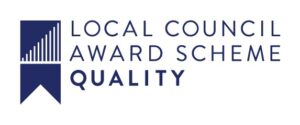The name Crewkerne derives from the old British ‘cruc’, meaning a hill and ‘aern’, a house or storehouse, and local born Crewkernians still refer to Crucaern.
There was a settlement in the Crewkerne area before the Anglo-Saxon period when King Alfred (871-901) developed Crewkerne as a centre of commerce and trade. Its importance at that period is shown by the existence of a Minster, a Mint, and tax-free status. Alfred bequeathed this Royal Estate to his youngest son (Æthelweard) and it remained a Royal Estate up to the Norman Conquest.
There are coins from the Mint at Crewkerne from the reign of King Canute (Cnut) in the Stockholm Museum, Royal Cabinet Collection, which may derive from trading or Danegeld.
The only evidence of the Anglo-Saxon period in Crewkerne is the location of St Bartholomew’s where there are some minor pre-15th century features above ground level. St Bartholomew’s is built on the site of the original Anglo-Saxon Minster, and it is recorded that “in the vault beneath the chancel there are recumbent figures of a King and Queen with their crowns on and a railing of gilt around them”. The vaults were filled in in the 18th and 19th centuries.
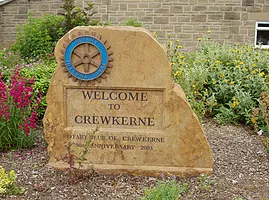
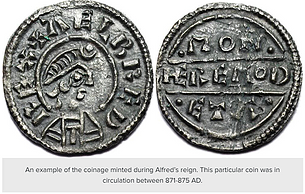
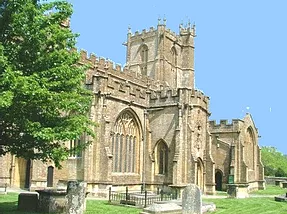
The original Minster was rebuilt during the Norman period. In the late 1400s, the prosperity of the local sheep farming, wool, and textile industry enabled the rebuilding of the Norman Church as a Parish Church on a much grander scale, but this rebuilding ceased with the Reformation (1530-1540).
Some later restoration and modernisation were carried out in the late 1800s, but for the most part, what is visible today dates from the 15th-16th centuries, though over the years many internal alterations have been carried out.
The Crewkerne Grammar School was founded in 1499 and was rebuilt in 1626. This building is now the current church hall.
Notable alumni are Admiral Hardy (Nelson’s Flag Captain at Trafalgar) and Anthony Brooke the first White Rajah of Sarawak. Subsequently, in 1882, the Grammar School was relocated to a purpose-built building in Mount Pleasant (now De Coombe House).
It is recorded that in the early 17th century many small farms combined making sailcloth, using locally grown flax (for which the soils of the area are especially suited) along with similar crafts whilst working their few acres.
The Industrial Revolution in the area started with the establishment of a water-powered mill at Viney Bridge (South Street) in 1789, using water from a tributary of the River Parrett. This mill produced linen and woolen girth webbing. By 1828 there were 27 sailcloth firms in the area and 1851 over 20% of the workforce was employed in the sailcloth industry. Workers’ cottages were built by the mill owners, a classic example being those in South Street associated with the Viney Bridge Mill.
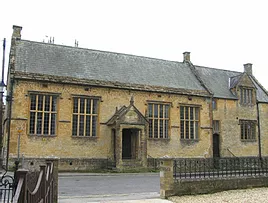
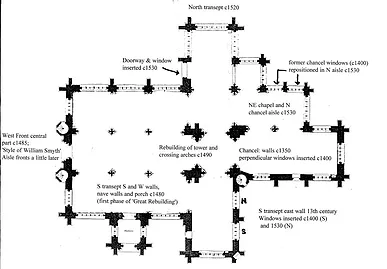
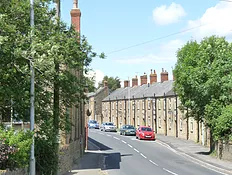
In 1867 mill owner Robert Bird converted a former factory in South Street to a hospital for the poor, this was replaced by the current building in Middle Path in 1904. He also founded 6 cottages on South Street for old weavers.
In later years Viney Bridge Mill produced webbing and manufactured the parachute harness webbing for the space shuttle ‘Columbia’.
The local sailcloth known as ‘Coker Cloth’ was recognised as a superior product, and is believed to have been used for some of the sails on HMS ‘Victory’. The sail cloth was also used by the United States Navy and sails for the US Americas Cup contenders. King George V’s yacht ‘Britannia’ also used Coker Cloth sails and was used for training the British contender for the America’s Cup.
The town also supplied sailcloth and serge to the East India Company.
The textile industry continued to expand and diversify and in 1872 the first clothing factory (West Somerset & Devon Shirt Co) started in Abbey Street and at one time had 600 employees. However, toward the end of the 19th century decline was setting in as sail gave way to steam and the textile industry moved north where coal and steam power were readily available. In 1953 the factory was taken over by Van Heusen with the shirts being shipped via Crewkerne Railway Station. The factory was subsequently used by Bonsoir for pyjama manufacture.
Crewkerne enjoyed many prosperous periods from the time of King Alfred with the Doomsday Book of 1086 recording the Market as the second most valuable in Somerset.
The Market Green then occupied the area (3 acres) between Market Square and the Church and bounded to the south by Church Street and to the North by Abbey Street (Carter Street).
In the mid-17th century, Crewkerne merchants supplied Lord Poulett of Hinton St. George with pencils, brushes, books of gold (gold leaf) ochre, umber, ‘Spanish’ white, and ‘Spanish’ brown for his new house, and regular purchases continued to be made from the Market. A Market Hall was built around 1730 and the 1776 Manor Estates map shows the Market Hall and Market Cross in existence with the Shambles in front of the Market Hall.
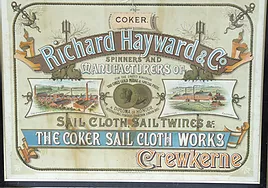
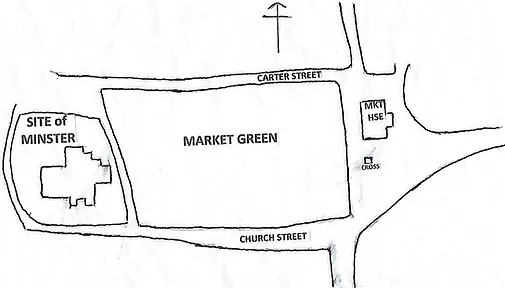
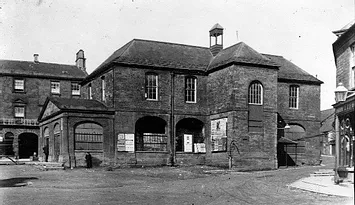
The Shambles existed from 1511 and at one time had 37 butchers. In 1836 the Market Hall was altered and the Shambles demolished to give an open area to the front. The Market Hall was substantially rebuilt in 1900 which is the Town Hall seen today. The original arches of the Market Hall have been filled in but can be seen on the west side.
The George Hotel on Market Square is an 1832 rebuild of the original 1541 coaching inn.
By the 16th century, Crewkerne was an important meeting place for the Exeter to London route and the route from Bristol to the Dorset Coast (avoiding the treacherous voyage around Land’s End). In 1501 Catherine of Aragon stayed overnight on her way to London to be married, and in 1688 Willian III (of Orange) stayed on 7th/8th November on his way to London from Torbay and prayed in St. Bartholomew’s on Sunday 8th.
In 1651, after defeat at the Battle of Worcester, Charles II passed by Crewkerne (Monarch’s Way) as he made his way to the South Coast to escape to France.
On 2nd May 2012 Queen Elizabeth II, on her way from Yeovil to Exeter, stopped in the Town as part of her Jubilee. (See plaque on Town Hall frontage).
Thomas Hutchings, Postmaster at Crewkerne from 1619 till after 1631, organised a mail service between London and Plymouth (The Quicksilver Mail Coach) which was the first profitable postal system.
The relative decline of the town in the late 19th and early 20th centuries meant there was little new building and as a result, the ‘Late Georgian’ buildings of the town centre remained substantially intact as seen today, though at street level many frontages have been converted to shops.
The one major exception was the development of one of the first Council Estates in the country. This was initiated at Severalls Park, by the Blake Family, with a War Memorial as a tribute to those who lost their lives in World War 1, and to alleviate the overcrowding and poor living conditions that existed in the town.
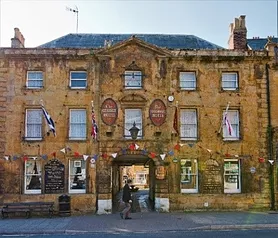

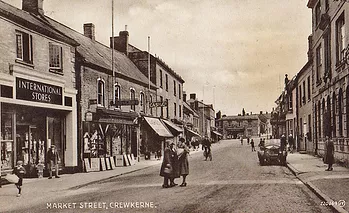
In the 1950’s a Trading Estate was created at Blacknell Lane with new and more diverse industries and from the opening in 1958 brought renewed prosperity to the town.
In 1973 the cottages provided by Robert Bird in South Street and the former Hospital were demolished for a road widening scheme leading to the formation of the South Street Car Park. The Cottages were relocated to Bird’s Close. Also in the mid-1970’s the Falkland Square Shopping Precinct was developed. The name acknowledges the Blake Family, who lived in what is now Solicitors offices adjacent to the Square, and who became wealthy as a result of sheep farming in the Falkland Isles. The George Shopping Precinct was also revitalised.
The sports facilities at the Henhayes Recreation Ground have been improved and the Aqua Centre, George Reynolds Centre and a Sports Centre at Wadham School have been built to extend the recreational and sports facilities in the town.
The oldest surviving building in the town is ‘Oscars’ Wine Bar which in parts dates from the 12th century. Candle Cottage dates from the late 1400s and was originally a medieval priests’ house, and the White Hart Inn dates from 1499. The museum has a 16th Century wing to the rear (behind the 18th Century Town House frontage) and the oldest part of Merefield House dates from the mid-17th century with later additions.
For anyone wishing to explore Crewkerne’s rich heritage and history further, the town’s Museum and Heritage Centre contains a wealth of additional information – www.crewkernemuseum.co.uk.
This information is available as a leaflet in Crewkerne Information Centre in the Town Hall.
